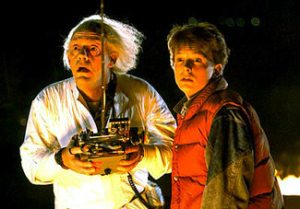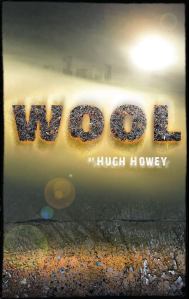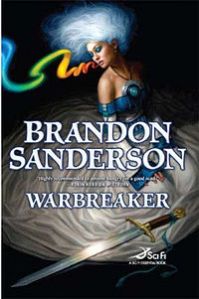While gun control is obviously a contentious issue for many Americans, I want to simply present some of the new proposals from the President in their undistilled form in order to cut past the partisan onslaught that has already taken over the debate. For the record, all of these quotes were taken from President Obama’s official gun policy proposal that came out today. (The full PDF can be seen here.)
• Require criminal background checks for all gun sales: Right now, federally licensed firearms dealers are required to run background checks on those buying guns, but studies estimate that nearly 40 percent of all gun sales are made by private sellers who are exempt from this requirement. A national survey of inmates found that only 12 percent of those who used a gun in a crime acquired it from a retail store or pawn shop, where a background check should have been run. Congress should pass legislation that goes beyond just closing the “gun show loophole” to require background checks for all firearm sales, with limited, common-sense exceptions for cases like certain transfers between family members and temporary transfers for hunting and sporting purposes.
This one is essentially a no-brainer. I cannot see how legitimate and traction-gripping claims could be made against an assertion that background checks should be mandatory for gun ownership. My only issue with the above quote is the inclusion of the “common-sense” phrasing. How many times over the past few years have you heard politicians refer to something as “common-sense”? It’s a pathetic ploy to appeal to the so-called “reasonable” side of all of us. It’s exclusionary speak — what if you do not feel that the phrase labeled as common-sense is, in fact, common-sense? Then you’re wrong. (According to the logic of that turn of phrase.)
• Improve incentives for states to share information with the background check system: States are a critical source for several key categories of relevant records and data, including criminal history records and records of persons prohibited from having guns for mental health reasons. The Department of Justice will invest $20 million in FY2013 to give states stronger incentives to make this data available. The Administration is also proposing $50 million for this purpose in FY2014, and will look for additional ways to ensure that states are doing their part to provide relevant information.
While I would like further information on what the “incentives” are going to actually be, I agree that the implementation of across-the-board background checks should be a collaborative effort.
• Make sure dangerous people are prohibited from having guns: The background check system is designed to keep guns out of the hands of those forbidden by law to have them. But we need to make sure our laws are effective at identifying the dangerous or untrustworthy individuals that should not have access to guns. The President will direct the Attorney General, in consultation with other relevant agencies, to review the laws governing who is prohibited from having guns and make legislative and executive recommendations to ensure dangerous people aren’t slipping through the cracks.
Again, this is a simple and logical suggestion.
• Reinstate and strengthen the ban on assault weapons: The shooters in Aurora and Newtown used the type of semiautomatic rifles that were the target of the assault weapons ban that was in place from 1994 to 2004. That ban was an important step, but manufacturers were able to circumvent the prohibition with cosmetic modifications to their weapons. Congress must reinstate and strengthen the prohibition on assault weapons.
Here we go. I’m not going to dive into the argument of what, exactly, constitutes an “assault” weapon. It’s a pointless (and circular) discussion that will never have an end. This particular piece of the proposal will not go through. It’s too vague to be successful.
That said, here is my personal view about what type of gun should be allowed for sale:
If the gun did not exist in the 18th century, it should be illegal for personal use. Look: when the constitution was written, the most advanced gun was essentially incapable of hitting a human after seventy yards. It could only fire about four times in a minute. Guns today? The phenomenal increase in accuracy and fire speed could never have been predicted by those who were saying that even 18th century muskets should be “well regulated.”
So, then, how is it unreasonable to address the second amendment head-on? The language of the amendment has not changed since the document was written. Guns have changed in ways that defy imagination. Why can we not address this disparity? The constitution was meant to be changed, to be expanded upon — why is this one amendment somehow a holy exception to the legislative process?
If you want to own a gun — fine. But, in my opinion, you should only be allowed to own antiques, barring new constitutional action.
• Limit ammunition magazines to 10 rounds: The case for prohibiting high-capacity magazines has been proven over and over; the shooters at Virginia Tech, Tucson, Aurora, Oak Creek, and Newtown all used magazines holding more than 10 rounds, which would have been prohibited under the 1994 law. These magazines enable any semiautomatic weapon to be used as an instrument of mass violence, yet they are once again legal and now come standard with many handguns and rifles. Congress needs to reinstate the prohibition on magazines holding more than 10 rounds.
This change stands a better chance at success than a blanket ban. Why does anybody (in the public sphere) need a gun with more than ten rounds in it? It doesn’t make sense. The only reason automatic weapons were invented was for murder. Hunting rifles, by and large, remain single-shot. I understand that some hunters like to use automatics for specific types of hunting, and that’s fine, but the original purpose of the gun is to kill people.
We do not, therefore, need large magazines that are designed to do nothing but kill. And don’t tell me that you can reload quickly — I’m sure you can — but the fact that you need to reload at all before you can continue your bullet spree ensures that there is time for somebody to stop you, if need be.
• Conduct research on the causes and prevention of gun violence, including links between video games, media images, and violence: The President is issuing a Presidential Memorandum directing the Centers for Disease Control and scientific agencies to conduct research into the causes and prevention of gun violence. It is based on legal analysis that concludes such research is not prohibited by any appropriations language. The CDC will start immediately by assessing existing strategies for preventing gun violence and identifying the most pressing research questions, with the greatest potential public health impact. And the Administration is calling on Congress to provide $10 million for the CDC to conduct further research, including investigating the relationship between video games, media images, and violence.
Video games finally make an appearance! Surprisingly, though, they are not demonized. Indeed, they are included with other forms of media under an umbrella of a generally violent culture. This is good. Even though there have never been accurate, conclusive studies to show a connection between video games and real world violence, a little introspection and investigation can have nothing but positive results.
•Protect the rights of health care providers to talk to their patients about gun safety: Doctors and other health care providers also need to be able to ask about firearms in their patients’ homes and safe storage of those firearms, especially if their patients show signs of certain mental illnesses or if they have a young child or mentally ill family member at home. Some have incorrectly claimed that language in the Affordable Care Act prohibits doctors from asking their patients about guns and gun safety. Medical groups also continue to fight against state laws attempting to ban doctors from asking these questions. The Administration will issue guidance clarifying that the Affordable Care Act does not prohibit or otherwise regulate communication between doctors and patients, including about firearms.
This seems like a reasonable precaution, especially given that the number of violent gun crimes committed by those with mental issues is statistically significant.
• Launch a national responsible gun ownership campaign: The Administration will encourage gun owners to take responsibility for keeping their guns safe with a national campaign. The campaign will promote common-sense gun safety measures like the use of gun safes and trigger locks, separate storage of guns and ammunition, and the reporting of lost and stolen weapons to law enforcement.
Although “common-sense” is rearing its ugly head again, I find this to be one of the most reasonable proposals on the list. This quote demonstrates that, of course, Obama does not wish to take anybody’s guns away. Personal responsibility is a perfectly reasonable measure to take in order to guard against possible incidents.
• Put up to 1,000 new school resource officers and school counselors on the job: The Administration is proposing a new Comprehensive School Safety program, which will help school districts hire staff and make other critical investments in school safety. The program will give $150 million to school districts and law enforcement agencies to hire school resource officers, school psychologists, social workers, and counselors. The Department of Justice will also develop a model for using school resource officers, including best practices on age-appropriate methods for working with students.
Schools will naturally play a large part in this discussion, and it can never hurt to have more staff inside of increasingly crowded schools. I cannot see a problem with this proposal.
• Support individuals ages 16 to 25 at high risk for mental illness: Efforts to prevent school shootings and other gun violence can’t end when a student leaves high school. Individuals ages 16 to 25 are at high risk for mental illness, substance abuse, and suicide, but they are among the least likely to seek help. Even those who received services as a child may fall through the cracks when they turn 18. The Administration is proposing $25 million for innovative state-based strategies supporting young people ages 16 to 25 with mental health or substance abuse issues.
This should have already been a focus in this country.
—————————-
There are many other proposals that were featured in the document that I did not decide to include in this post. I merely chose the ones that I could talk about intelligently and that would be important for the discussion moving forward.
It’s true — I don’t like guns. I am, however, surrounded by them. There are more guns in my family than there are people. I skeet shoot occasionally. I enjoy archery.
The types of weapons that have been used in these recent crimes, though, simply do not need to be owned by civilians. If you want to defend your homestead (a particularly antiquated notion), you can do so swimmingly with a shotgun. Or a bat. Or a taser. You do not need an AR-15 to stop all of the “bad” people who constantly assault your house.
Your guns aren’t being taken away (unless they are now illegal or soon-to-be illegal, and then.. I don’t feel bad for you. Automatic weapons of war have no place in a home) — they are simply becoming better-organized members of society.
My prediction is that about half of these proposals will pass through the system. None of the contentious ones will make it through. To use military parlance, though, it could be said that this is a war of attrition. Big, sweeping changes will not be accepted. Little changes, however, may eventually accumulate into a substantial difference.
I hope.











